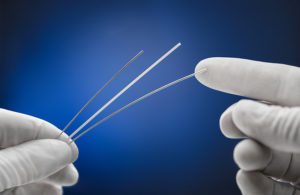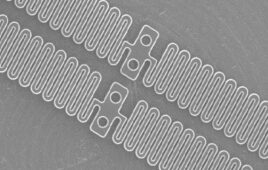Jonathan Jurgaitis, Spectrum Plastics Group

[Image courtesy of Spectrum Plastics Group]
One performance property of these polymers – directly related to the designation of high-heat thermoplastic – is that they have a higher maximum operating temperature, compared to other engineering materials. Maximum operating temperatures for high-heat thermoplastics range between about 380 °F up to 450 °F or even 500 °F depending on polymer type. High-heat polymers are all rigid, hard and extremely tough. These materials also have extreme chemical resistance properties. They’re able to withstand multiple cycles of all sterilization types, and tend to be inherently flame retardant.
High-heat thermoplastics make up a very small percentage by weight of all plastics used in the world, less than 5%. Costs for these materials can start in the mid-teens of dollars per pound on up to the $30 to $50 per pound range. Specialty grades, implant grades and custom compounds have even dramatically higher costs.
How do they work?
High-heat thermoplastics are made up of less common chemical constituents and the processes to make the polymers can be more difficult and complex. The various chemical makeups of these materials have more powerful bonds between the constituent atoms. The more powerful bonds give the high-heat thermoplastics their high strength, and chemical and heat resistance. It requires more energy to loosen those bonds, in the form of heat to process them into finished products and other forces that might weaken them in their respective applications.
The properties listed above mean that high-heat thermoplastics are useful in the most demanding and extreme environments and applications. A variety of industries use high-heat thermoplastics, with the materials found in aerospace, military, high-end automotive, industrial, electronic and medical components. Because of their extreme capabilities and high costs, high-heat thermoplastics are reserved for the most demanding and niche applications within those industries.
In the medical industry, this means that they are sometimes used to replace stainless steel, but are increasingly used in neuro, pediatric, orthopedic and access device applications where they can provide more design freedom and functionality than previous rigid materials and multi-component constructions. Many raw material suppliers offer medical-grade versions of these materials and some are offered in permanent implant grades as well.
High-heat thermoplastics require specialized machinery and processes to mold them into their finished parts. Necessary enhancements for machinery includes heaters capable of maintaining process temperatures up to 800 °F. The barrel needs to be made of metals and alloys with higher heat resistance, such as high-nickel alloys, to maintain the tight tolerances between barrel and screw, and in some cases, tooling will need to be made of similar high-heat-resistance metals for the same reasons. Most high-heat thermoplastics are hygroscopic and need to be dried at higher temps, which will require specialized driers as well. Most of these high-heat materials will need to be cooled down slowly in the forming process to minimize molded-in stresses and/or maximize crystallinity. This will require special heated molds and downstream calibration that slows heat loss.
High-heat thermoplastics have become greatly utilized materials in a wide array of technical, niche and demanding applications and have been key in advancing technological growth in our modern world.
Jonathan Jurgaitis is a senior extrusion engineer at Spectrum Plastics Group’s Apollo Medical Extrusion Technology business. Jurgaitis has been in the custom medical extrusion industry since 2006, helping to manufacture catheter and medical device components. He’s held a variety of positions in the extrusion industry since 1993.
The opinions expressed in this blog post are the author’s only and do not necessarily reflect those of Medical Design and Outsourcing or its employees.




